Test Cycle - Workflow, Clone, Update and More ...
After a test cycle is created, user can change its workflow, make a clone or update details in order to fit changes done by testing team.
Test Cycle Workflow
There are total of 4 workflow status for a test cycle:
Status | Description |
|---|---|
DRAFT | This is the initial status once a test cycle is created, it means the test cycle is still not ready yet for execution. Test cycle in this status is allowed to be deleted. |
ACTIVE | This status indicates that the test cycle is ready and currently being executed on. Test cycle in this status is not allowed to be deleted. |
COMPLETED | This status indicates that test execution for the test cycle is done. Test cycle in this status will become read-only, user will not be able to update test executions anymore. Test cycle in this status is not allowed to be deleted. |
ABORTED | This status indicates that the test cycle has been aborted for some reason, the team will no longer use it. Test cycle in this status will become read-only, user will not be able to update test executions anymore. Test cycle in this status is allowed to be deleted. |
Only ‘Test Lead’ role can change test cycle workflow.

Clone Test Cycle
Clone a test cycle allows you to create a new test cycle with a group of test cases in a certain test result, it helps user to re-execute test runs those are ‘Failed’ or ‘Blocked’ (or with other results) in a new created test cycle. Test runs only in selected results will be presented in cloned test cycle.
Test runs ONLY in selected results will be duplicated in the new test cycle.
Test run’s result is initialized to ‘Not Tested’ in new test cycle.
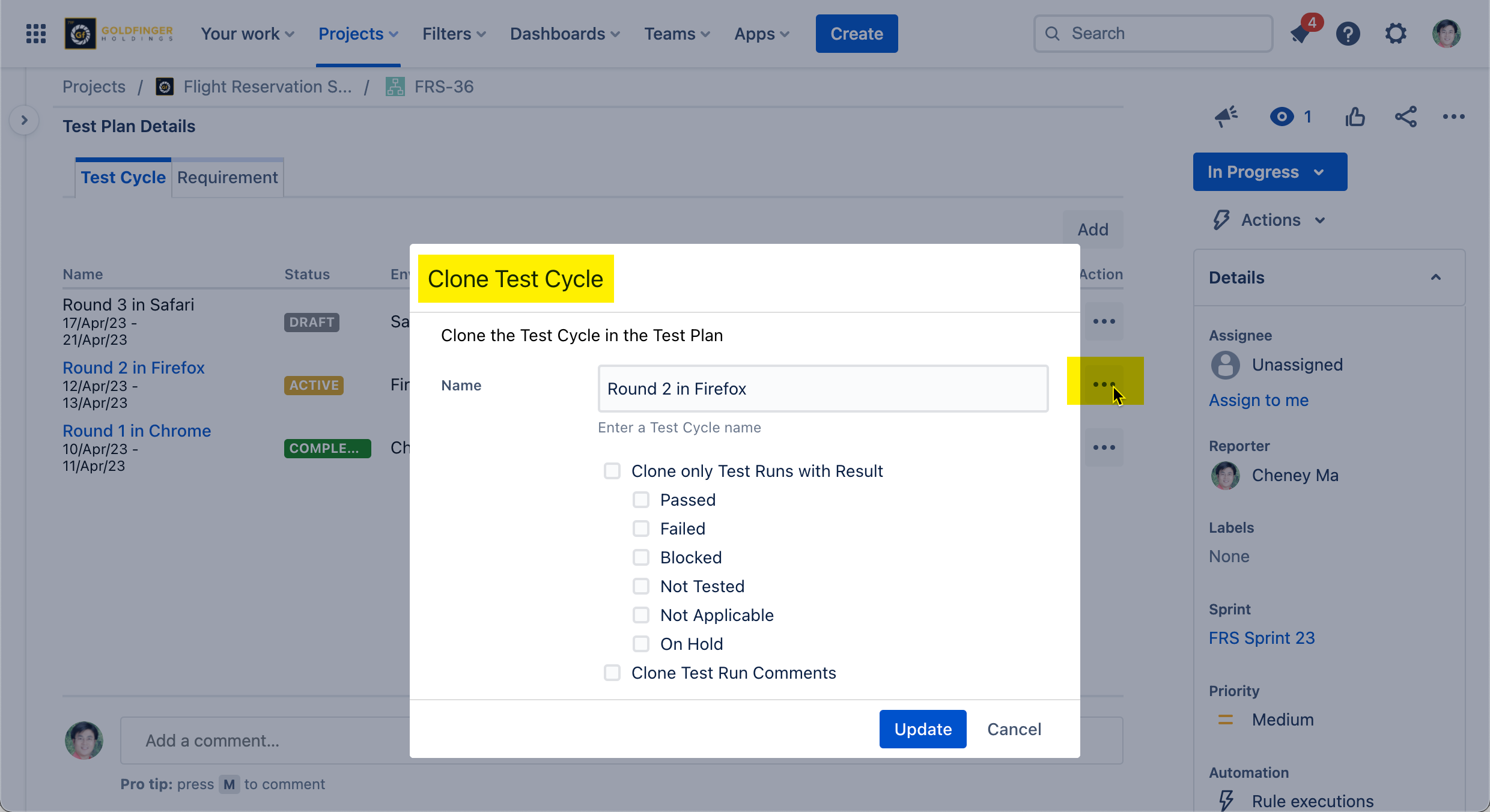
Add Additional Test Cases to Test Cycle
In ‘Editing’ mode, click either “Select Test Case” or “Add Requirement” button to select new test cases for the test cycle.

Delete Existing Test Cases with Test Runs from Test Cycle
If some exiting test cases are not necessary anymore for the test cycle, you can choose to delete them. All test runs created from those test cases will be deleted together from the test cycle.
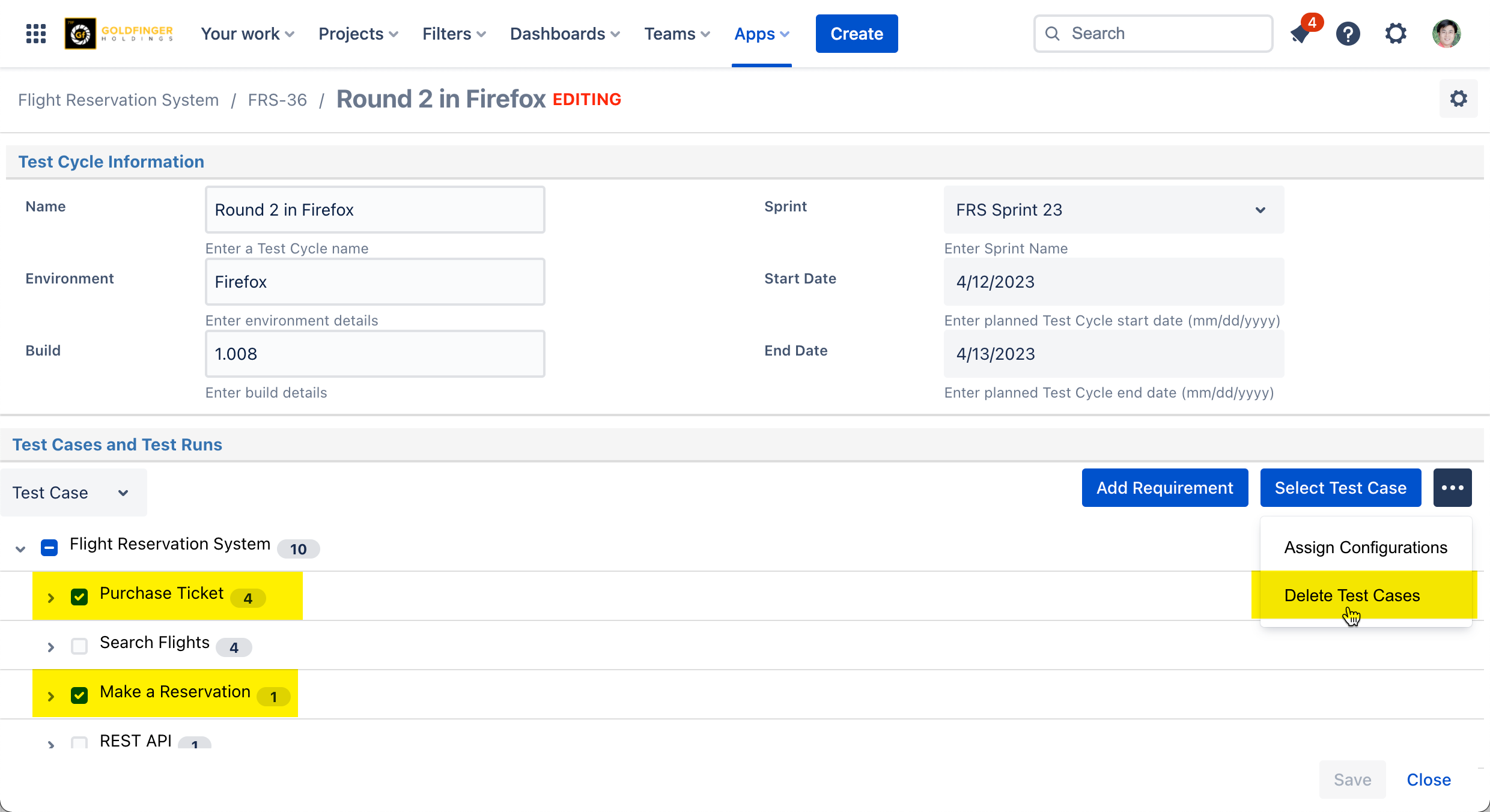
Delete Existing Test Runs from Test Cycle
If some exiting test runs are not necessary anymore for the test cycle, you can choose to delete them. This will not delete the corresponding test cases from where test runs are created.
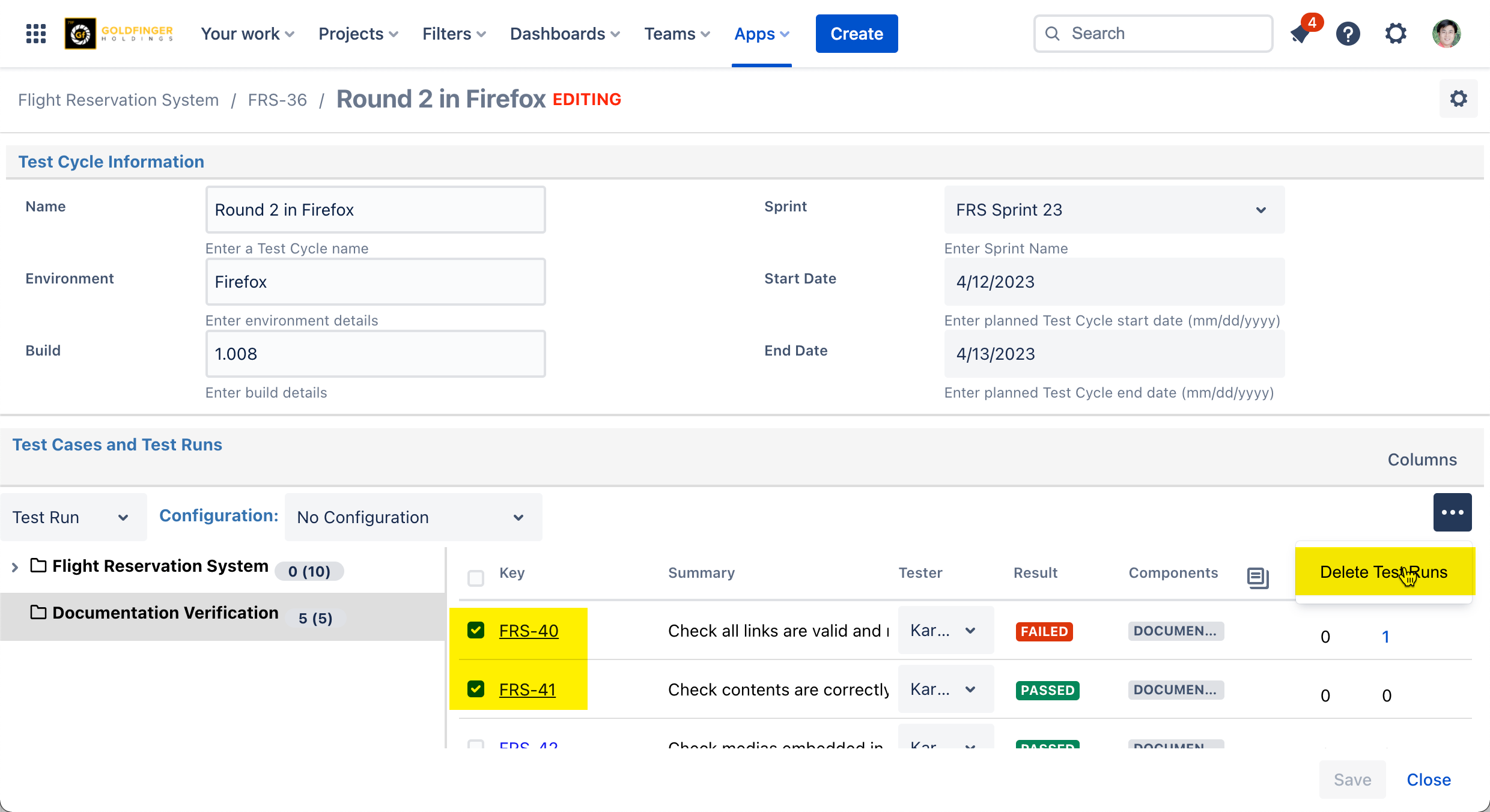
Assign Tester
Bulk Assign Test Runs
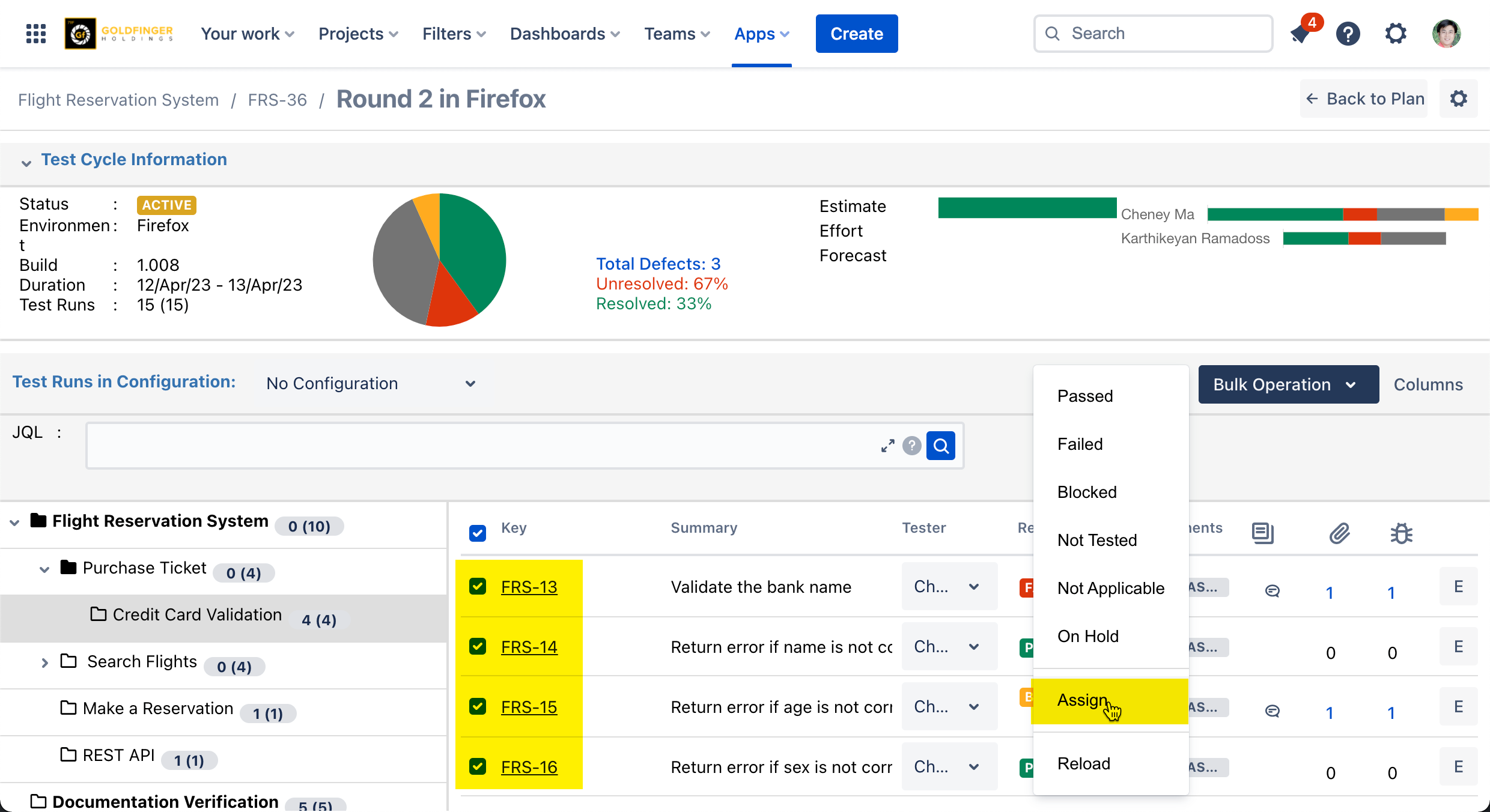
Assign from a Single Test Run
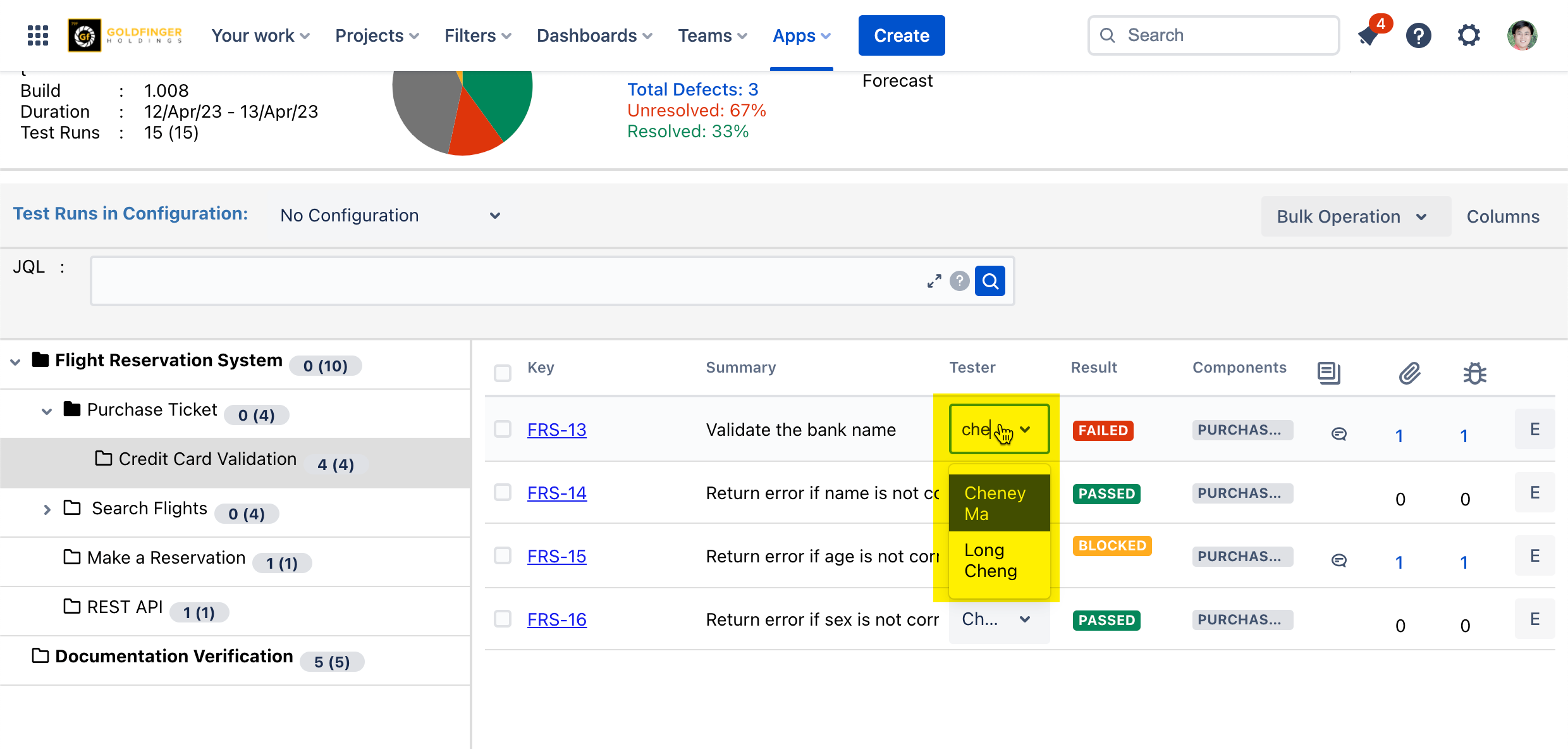
Reload Test Runs to Fetch Latest Test Steps
If test step is changed after test runs created, the change will not reflect automatically in test urn as it is a snapshot of test case at the time it created.
You can reload to fetch the latest test case change, note that your existing execution updates will be removed from the test run.
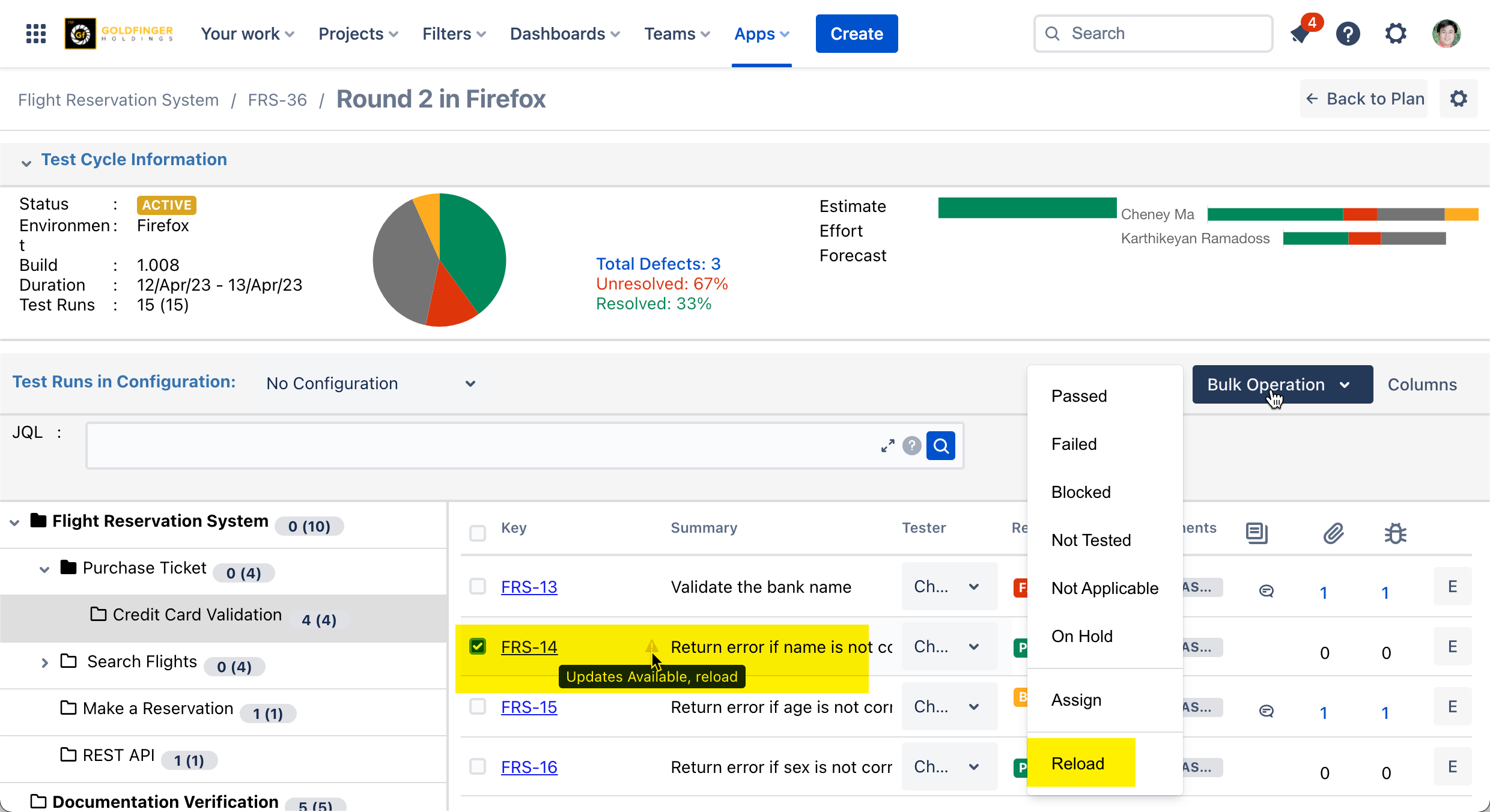
Everything is ready now, ask your team to start test execution by following: Test Run - Execute Tests and Report Defect
